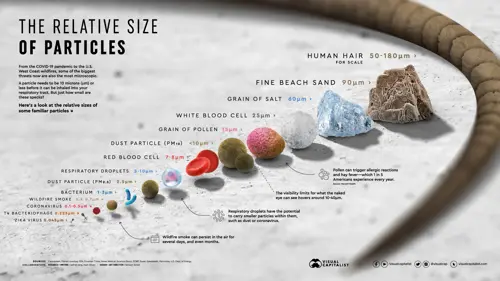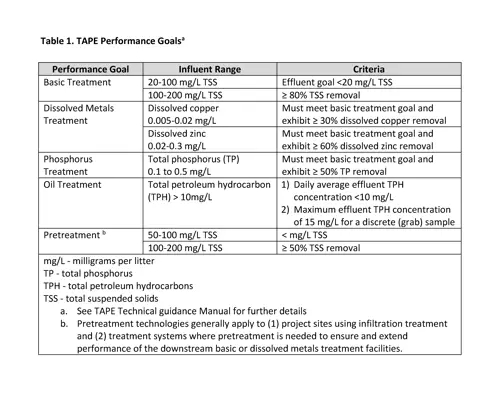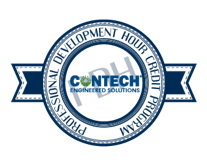Introduction
Civil engineers working on land-development projects typically are hired to develop site plans and gain regulatory approval for those plans. In most urban areas, a stormwater management plan must be approved prior to construction. The purpose of each plan is to ensure the project is designed to minimize the amount of pollutants that are washed from a site during storm events and transported into downstream water bodies through storm drains as well as to reduce the peak flows and excess runoff volume that result from the creation of impervious surfaces. Therefore, engineers must understand the fundamentals of stormwater quality regulations, including why they were developed, how to find and interpret local stormwater quality regulations and design criteria, and how to find and use independently verified performance data to evaluate innovative stormwater control measures (SCMs) to meet regulatory goals.
The Beginning: The Clean Water Act and The National Pollution Discharge Elimination System (NPDES)
Modern stormwater regulations can be traced back to the Clean Water Act (CWA), which was adopted in 1972. The CWA was one of the first and most-influential modern environmental laws in the United States. The various water-quality protection programs created by the CWA are administered by the U.S. Environmental Protection Agency (EPA) in coordination with state governments.
Initially, the CWA focused on known point-source polluters such as industrial and factory end-of-pipe discharges and wastewater treatment plant effluent. Under the CWA, these point-source facilities were required to obtain National Pollutant Discharge Elimination System (NPDES) permits that established limits on the amount of pollutants they were allowed to discharge into receiving waters. The NPDES program was initially utilized to hold known polluters accountable and ensure that permitted facilities deployed treatment mechanisms and made changes to their processes that reduced discharges of potentially harmful substances to receiving waters. As these pollution sources began to come under control, it became apparent that the widespread water-quality impairments that remained could only be mitigated by including stormwater runoff from urban land-development projects, industrial facilities and construction sites under the scope of the NPDES program. In 1987, Congress passed amendments to the CWA to regulate these nonpoint sources.
In 1990, the EPA issued Phase I NPDES Stormwater Rules that required municipal separate storm sewer systems (MS4s) serving populations of 100,000 or more to obtain individual NPDES permit coverage for their stormwater discharges. An MS4 comprises all the conveyances (e.g., roads, catch basins, curbs, gutters, ditches, man-made channels and storm drains) owned or operated by a governmental entity and used for collecting and conveying stormwater to a natural receiving water body. Each Phase I MS4 owner or operator must obtain an individual NPDES permit tailored to their local specific conditions and impairments.
In some areas of the United States, many individual jurisdictions are covered by one regional Phase I permit. This encourages cooperation in resolving water-quality issues and results in similar requirements for different permittees that may discharge to common water bodies. Each MS4 permit includes many requirements collectively intended to reduce the overall stormwater pollutant load discharged by each MS4. The permit is renewed every five years, typically with increasingly stringent criteria and milestones. Each time a permit is renewed, permit implementation manuals, local ordinances, and other guidance that set project-level expectations for engineers and developers working on land development projects that will discharge to the MS4 also are updated.
After nearly a decade of experience implementing the Phase I program, the EPA issued the Phase II Stormwater Rule in 1999. The Phase II stormwater regulations require all small MS4s in U.S. Census Bureau-defined urbanized areas (population less than 250,000 and qualify as urbanized based on population density), additional MS4s designated by the permitting authority and additional categories of industrial sites to obtain NPDES stormwater permit coverage for their stormwater discharges. Phase II also includes non-traditional MS4s, such as public universities, departments of transportation, hospitals and prisons. Collectively, Phase II resulted in thousands of newly regulated MS4s. Phase II permits are issued at the state or territory level rather than for individual small MS4s. The general permit process, unique to Phase II, is intended to ease the administrative burden on small MS4s with limited resources.
Ultimately, the objectives of Phase I and Phase II NPDES stormwater rules are to reduce the discharge of stormwater pollutants of concern to the maximum extent practicable, protect and restore beneficial uses of the waters of the United States, and prohibit the discharge of any pollutant to waters of the United States from a point source unless the discharge is authorized by an NPDES permit.
NPDES Phase I and II stormwater permits are issued by the EPA or the applicable state agency delegated to do so (46 of 50 states now are delegated). Permits allow an MS4 to discharge pollutants into a water body legally but only in quantities that will not impair water quality or restrict beneficial uses of receiving waters (e.g., fishing and swimming). Phase I and II permits include minimum requirements for both temporary stormwater controls used to minimize harmful discharges from construction sites and permanent stormwater controls that remain in operation after the project’s construction phase. These requirements are the basis of the stormwater plan review criteria that engineers must meet prior to construction.
The Role of State and Local Stormwater Regulations
The NPDES stormwater rules require all regulated MS4s to develop, implement and enforce a program to reduce pollutants in post-construction stormwater runoff from new development and redevelopment projects that result in land disturbance of greater than or equal to 1 acre to the maximum extent practicable. However, most of the specific requirements—including the amount of runoff to be treated, treatment standards, acceptable stormwater control measures (SCMs), SCM design criteria and program reporting requirements—typically are established at the state and/or local level. The term “maximum extent practicable” is intentionally flexible and intended to provide local regulators the latitude to establish specific requirements to best address local impairments while also accounting for local climate and precipitation patterns. At the project level, meeting the “maximum extent practicable” standard is commonly understood to require implementation of the most-effective stormwater pollution controls that are also technically feasible and not cost prohibitive.
Engineers must be familiar with local stormwater regulations and policies as well as applicable stormwater design manuals (commonly issued at the state level) to ensure their project designs meet standards enforced in the local plan-review process. Most states and a growing number of local programs now have their own stormwater design manuals. These stormwater design manuals, sometimes called BMP manuals, contain essential details on pollutant-removal targets, proper calculation of runoff rates and volumes, local design storms, detailed design and construction criteria for SCMs, testing and verification requirements for new/innovative SCMs, and local design examples for reference. They also may include standardized submittal worksheets that help the plan-review team efficiently find and evaluate submittals. In short, they are an essential resource to ensure a project is designed in accordance with applicable local requirements. Most states and many local programs also have dedicated stormwater staff who can be consulted during project design, and many programs also maintain websites with links to all applicable standards and design resources.
Common Pollutants of Concern
Suspended sediment, usually referred to as Total Suspended Solids (TSS), is the most-regulated stormwater pollutant, in large part because it is relatively easy to measure and remove and is assumed to be a reasonable surrogate for other pollutants that can attach to solids but are more difficult to assess, such as herbicides, pesticides, heavy metals and nutrients. TSS transported to receiving waters by stormwater runoff also can increase turbidity, which obstructs sunlight and limits photosynthesis in aquatic plants. TSS may also blanket stream beds, reducing viable habitat for aquatic insects, fish, amphibians and other wildlife.
The most common TSS regulation is a requirement to reduce the post-construction TSS load by 80%. The 80% target, first introduced in the Coastal Zone Reauthorization Amendments of 1990, was chosen because the SCMs common at the time, such as detention ponds, were thought to be able to achieve the goal without being cost-prohibitive to implement and because 80% TSS removal was expected to result in removal of other priority pollutants.
As our knowledge has grown and stormwater regulations evolved to target specific water-quality impairments, many stormwater programs added requirements for other pollutants such as phosphorus, nitrogen and heavy metals. Excess nutrients harm aquatic ecosystems by causing algal blooms, oxygen depletion and habitat degradation. Heavy metals such as copper, zinc and lead can be toxic to fish and other aquatic life at concentrations in untreated urban stormwater. A growing list of state and local stormwater programs have developed numeric standards to combat impairments from these and other stormwater pollutants, so it is crucial to consult local policies and design manuals to ensure SCMs are deployed to effectively address local pollutants of concern.
Low-Impact Development
Stormwater approaches based on Low-Impact Development (LID) or Green Infrastructure (GI) management are increasingly common as stormwater permits are renewed. These approaches seek to maintain the site’s pre-development runoff rates by reducing the creation of impervious surfaces as well as infiltrating, storing and evaporating runoff close to the source to protect water quality. This often is done using land-based vegetative systems such as rain gardens, bioretention cells and other means of retaining runoff onsite. The definition of LID and GI varies, but some definitions focus exclusively on design approaches and SCMs that retain all stormwater onsite. For example, the 2019 definition of GI from the U.S. Congress (taken from the Water Infrastructure Improvement Act) excludes SCMs that treat and discharge stormwater to receiving waters.
LID- and GI-based permits typically require stormwater runoff to be infiltrated or captured and used onsite where technically feasible. This is undoubtedly the most-effective means of surface-water protection, since eliminating runoff also eliminates runoff-related pollution. However, retaining all runoff onsite often is not feasible. Where there will be stormwater discharge, it’s imperative to focus on the quality of discharged runoff.
SCM Water-Quality Performance Verification
Runoff-reduction SCMs such as infiltration basins and galleries, permeable pavement, harvest and use systems, and bioretention typically are assumed to be 100% effective for all pollutants in runoff they retain. Therefore, review of these SCMs typically focuses on proper sizing and design for fully retaining the stormwater and incorporating pretreatment to minimize operation and maintenance costs. Water-quality performance verification rarely is needed unless there are groundwater vulnerabilities. However, water-quality performance verification is necessary for any SCM that treats and releases stormwater to ensure it is providing the expected pollutant load-reduction benefits.
Research on the water-quality performance of SCMs has been ongoing for more than 40 years, with many foundational studies on the effectiveness of ponds, swales, filter strips, oil/water separators and sand filters completed following the incorporation of stormwater into the NPDES program. More recently, there has been a proliferation of bioretention research into innovative stormwater filters, hydrodynamic separators, and alternative biofiltration designs and medias.
The International BMP Database
Since its inception in 1996, The International Stormwater BMP Database2 has archived performance, design and cost data for SCMs (also commonly referred to as best management practices (BMPs)) in a publicly accessible database. Managed by The Water Research Foundation, the project aims to provide scientifically sound information to improve the design, selection and performance of urban SCMs. More than 700 SCM studies have been added to date. Data from individual studies can be extracted as desired, but the project’s most-accessible and widely referenced outputs are summary reports that compile the available field-performance data for various SCMs and pollutants.
The abstract of the latest International Stormwater BMP Database 2020 Summary Statistics report states:
“This 2020 analysis not only includes new performance studies, but also new analysis categories for manufactured treatment devices. Data summaries include basic summary statistics for BMP influent and effluent concentrations, graphical summaries of statistics, and hypothesis test results for assessing whether the BMP had an effect on influent concentrations for various pollutant-BMP combinations. Additionally, information about typical pollutant sources and dominant pollutant removal mechanisms.”
This report is an excellent resource that takes a complex body of data and presents it in a very accessible form. The International Stormwater BMP Database has been the primary reference for the performance of public-domain SCMs such as ponds, swales, bioretention and wetlands for many years. In the most-recent summary report, high-flow media filtration, high-rate biofiltration and hydrodynamic separation have been added as separate BMP categories and contain research on the effectiveness of these systems. While this information is useful in characterizing the performance of each system type, it does not necessarily link specific performance outcomes to differences in design, media composition or hydraulic loading rates. To understand how design differences impact performance, more systematic research is needed that follows standardized protocols.
Laboratory-Based Water-Quality Verification
The New Jersey Department of Environmental Protection (NJDEP)3 developed the leading laboratory-based performance verification protocols for evaluating hydrodynamic separators and media filters. These protocols specify the testing procedures and materials for evaluating TSS removal capability. As a surrogate for TSS, the protocol requires the use of a specific gradation of silica particles that contains particles from as small as 2 microns (very fine silt) up to 1,000 microns (medium to coarse sand) with a median particle size of less than 75 microns. Requiring all SCMs to use the same protocol and surrogate pollutants allows for comparability of the results across SCMs.

The hydrodynamic separator (HDS) protocol assesses performances across a range of operating rates and then pairs results with local rainfall data in a weighted formula to target greater than 50% annual TSS removal. It also requires that HDS systems complete scour testing to ensure previously captured solids are not washed out during high flows. The filter protocol requires testing at the loading rate at which greater than 80% TSS removal is being achieved, effectively requiring the removal of all particles greater than 8 microns (about the size of a red blood cell or coarser) as well as establishing the amount mass filters can capture before reaching a failure point and needing maintenance to restore performance.

SCM proponents are required to test a commercially available system in a laboratory facility that conforms to protocol requirements. If performance targets are met, a complete testing report is sent to the New Jersey Corporation for Advanced Technology (NJCAT) for peer review and verification that the results are accurate and the testing plan was followed. Since NJCAT provides verification services for various technologies and testing protocols, NJCAT verification alone does not necessarily mean the NJDEP protocols were followed. Only those studies that strictly follow the applicable NJDEP protocol and successfully complete the required peer-review process are certified by NJDEP. Once certified, the SCM is added to NJDEP’s list of certified technologies. One of the reasons the NJDEP program is so important is that many state and local programs do not have sufficient resources to maintain their own programs and instead offer reciprocity acceptance of NJDEP-certified SCMs.
Field-Based Water-Quality Verification
Although standardized lab tests are invaluable in benchmarking the performance of various SCM designs against each other, they don’t necessarily accurately represent field performance. For example, the test sediment used in the NJDEP protocol does not include organic materials, hydrocarbons or other pollutants that are likely to be present in real stormwater. As a result, the capacity of media filters to accumulate sediment prior to occlusion may be overestimated. Similarly, laboratory protocols have yet to replicate the more-complicated water chemistry of pollutants other than TSS, such as nutrients and heavy metals. Testing in the field with real stormwater and pollutant loads is essential to assess real-world performance. Variables such as TSS particle-size distribution, rainfall intensity and runoff rate, pollutant concentrations, and chemical forms are constantly changing in the field. These dynamics are nearly impossible to replicate in the laboratory.
The premier field-based performance verification protocol for SCM evaluation is the Washington State Department of Ecology (Ecology) Technology Assessment Protocol – Ecology4 (TAPE) program. The protocol requires water-quality and flow monitoring during at least 15 storms to assess system performance. Ecology has set specific performance targets (Table 1) for pretreatment, basic treatment, phosphorus treatment and dissolved metals treatment, and has established target influent concentration ranges that data must meet to minimize the potential bias introduced by atypical pollutant loading.
Stormwater control measures that complete field testing following the TAPE protocol and meet the TAPE performance goals are granted General Level Use Designations (GULDs). Many local and state stormwater programs require or accept proprietary systems with TAPE General Level Use Designations for one or more pollutants. It’s important to note that this program also is applicable to public-domain systems, several of which have participated in the TAPE verification process and have received GULDs for one or more performance goals.
Conclusion
Understanding stormwater-quality regulations is essential for engineers working on land-development projects. The Clean Water Act and the NPDES Phase I and Phase II stormwater programs provide a foundation for state and local programs to regulate stormwater discharges from land-development projects in urban areas in the United States. Engineers must be familiar with local stormwater management regulations found in their local permits, policies and stormwater design/BMP manuals.
Performance verification, paired with the appropriate design of all SCMs, is crucial to ensure compliance and assess the effectiveness of stormwater management practices. Laboratory and field testing conducted in accordance with recognized protocols, such as the NJDEP laboratory protocols and the TAPE field protocol, provide valuable data on SCM performance and appropriate sizing to achieve water-quality goals. The International Stormwater BMP Database also is a valuable resource for accessing the performance, design and cost data of stormwater BMPs. By understanding and adhering to stormwater quality regulations, engineers can effectively manage stormwater runoff generated on their projects to protect downstream water resources.
References
1. What is Green Infrastructure
https://www.epa.gov/green-infrastructure/what-green-infrastructure
2. The International Stormwater BMP Database
https://bmpdatabase.org/
3. New Jersey Department of Environmental Protection – Post-Construction Stormwater Management
https://dep.nj.gov/stormwater/stormwater-manufactured-treatment-devices/
4. TAPE program
https://ecology.wa.gov/Regulations-Permits/Guidance-technical-assistance/Stormwater-permittee-guidance-resources/Emerging-stormwater-treatment-technologies#tape
Authors
Derek Berg ([email protected]) and Vaikko Allen ([email protected]) are with Contech Engineered Solutions.




